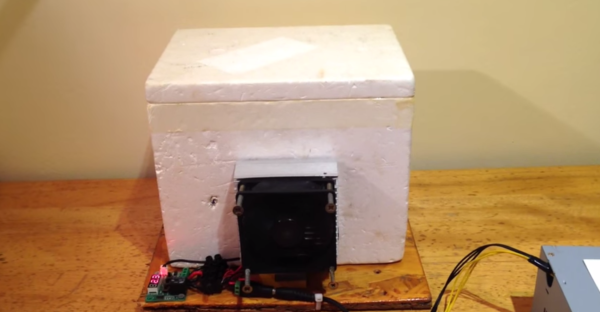Ever play with a Peltier plate? They’re these really cool components that kind of look like a ceramic sandwich, and when you put power into them, one side gets hot, and one side gets freezing cold! [Joseph Rautenbach] decided he wanted to try making his own mini fridge out of one — which is typically how most modern mini fridges work these days.
The peltier plate he’s using draws 12v at about 3.5 amps — so about 50W — and if you don’t heat sink it properly you could burn it out in a matter of seconds. Peltier plates only care about the temperature differential between the two sides — if you don’t take the heat away from the hot side, it will soon overheat and destroy itself.
[Joe’s] using a styrofoam cooler for the fridge with a pair of computer heat sinks and fans for the peltier plate, and a temperature PID controller he bought off eBay. The external heat sink sucks away the excess heat generated by the peltier plate, and the internal one helps spread cooled air around the inside of the styrofoam cooler. The PID controller allows him to set a preferred temperature to maintain in the box, which will then control the outputs to keep it that way.












